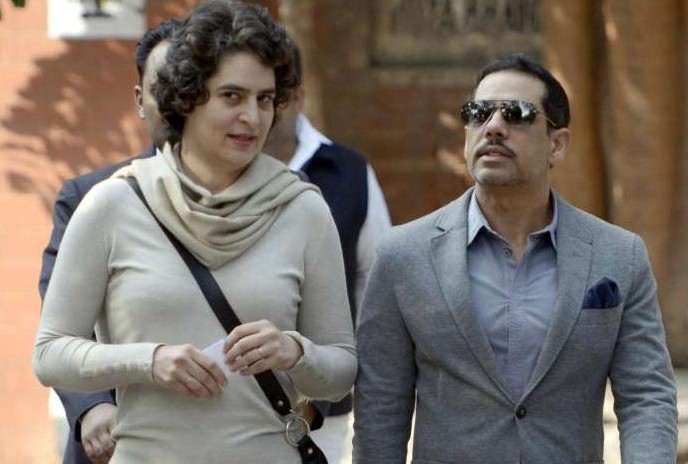Why Rahul Gandhi decided to a take a break, recalling his earlier periodic slumming in Dalit households, will not be clear till he breaks his silence. But, as of now, some of the effects of his absence are becoming clear. The most obvious of them is that Sonia Gandhi has had to return to active politics to fill the vacuum caused by her son’s truancy…writes Amulya Ganguli

If Rahul Gandhi is in retreat in a Buddhist monastery in Myanmar, as rumours have it, then he can be said to be imitating, in part, the Sakya prince who left home and hearth 2,500 years ago to find out the meaning of life.
In the Congress’ heir-apparent’s case, however, his quest is seemingly for finding his own rightful place in the 130-year-old party.
Why he decided to a take a break, recalling his earlier periodic slumming in Dalit households, will not be clear till he breaks his silence. But, as of now, some of the effects of his absence are becoming clear.
The most obvious of them is that Sonia Gandhi has had to return to active politics to fill the vacuum caused by her son’s truancy.
What happened as a result is to highlight the fact that the party did not miss Rahul during the political tremors caused by the judicial summons to Manmohan Singh and the submission of a petition by 100 MPs belonging to 14 opposition parties against the land acquisition law to President Pranab Mukherjee.
Besides, it is also evident that the Congress’ worst-ever performance in the last general election hasn’t curbed Sonia Gandhi’s combativeness or the willingness of other parties to follow her lead.
It goes without saying that the boost to the Congress president’s profile has marginally diminished the vice-president’s.
This wouldn’t have been the case if he had stayed back and accompanied his mother in the march to Manmohan Singh’s residence to offer the party’s support to him, or met the media in the forecourt of Rashtrapati Bhavan following the meeting of the opposition leaders with Pranab Mukherjee.
Unlike in matters of love, where absence makes the heart grow fonder, it is the opposite in politics where being present at crucial moments make or break a leader.
It is too early to say whether Rahul has missed the cue by choosing to be away at a time when the initially high approval ratings of the Narendra Modi government have begun to slide a little.
But the speculation that the Congress may not be in a hurry to anoint him as party president suggests that the dauphin may have taken a false step.
For one, Sonia Gandhi’s assumption of the leadership role despite her indifferent health suggests a realization that she may have reposed too much faith in Rahul’s capability and willingness to take charge.
For another, her return to the battlefield means that the so-called old guard – Ahmed Patel, Janardan Dwivedi, Motilal Vora and others – who are said to have earned Rahul’s ire have acquired a new lease of life.
It is back to square one in the Congress, therefore, where Sonia Gandhi, its chief for a decade and a half, is now expected to continue for some more time because of the uncertainty about the seriousness of her successor.
Even if Rahul is appointed the president, it will be an act of tokenism because his prolonged sabbatical has shown that his interest in the hurly-burly of politics remains sporadic.
For both Congressmen and the country, the apparent dual control at the top – for Sonia Gandhi will not fade away if Rahul takes charge – will be a reminder of the perils of dependence on one family with its penchant for keeping the reins in its grip.
Such reliance may have been all right if the family had retained the charisma and popularity of its earlier generations. But neither Sonia nor Rahul can lay claim to such an attribute.
Moreover, their ideological orientation appears to be out of sync with a globalized world where deregulated rather than controlled economies are the flavour of the day.
 Yet there is reason to believe that the family wants to abandon the reforms initiated by Manmohan Singh in 1991 and revert to the Congress’ earlier path of Nehruvian socialism. As the party’s general secretary Digvijay Singh has said, the “right-wing space does not belong to us”.
Yet there is reason to believe that the family wants to abandon the reforms initiated by Manmohan Singh in 1991 and revert to the Congress’ earlier path of Nehruvian socialism. As the party’s general secretary Digvijay Singh has said, the “right-wing space does not belong to us”.
The Congress is probably hoping that the 10-odd parties which are with it will give it an edge in the matter of numbers. But these include some of the parties, such as the Janata Dal-United and the Rashtriya Janata Dal whose attempts to set up a new party have come a cropper, apparently because of ego hassles.
To add to the numbers, Sonia Gandhi even sought Anna Hazare’s support on the land acquisition law – the very person who launched a highly effective anti-corruption movement against the Manmohan Singh government in 2011.
However, the fact that Anna hasn’t forgotten those days is evident from his comment that the Congress’ motive for opposing the land acquisition bill is only to gain “political mileage” as the party is not interested in the welfare of farmers.
If Anna is deemed a spent force, so in a way are the Communists who joined the march to Rashtrapati Bhavan. The INLD leaders are in jail. The influence of the RJD and the Janata Dal-United is limited to Bihar.
Sonia Gandhi, therefore, can be said to be leading a somewhat ramshackle alliance even as her son’s absence casts a shadow on the Congress’ future prospects.